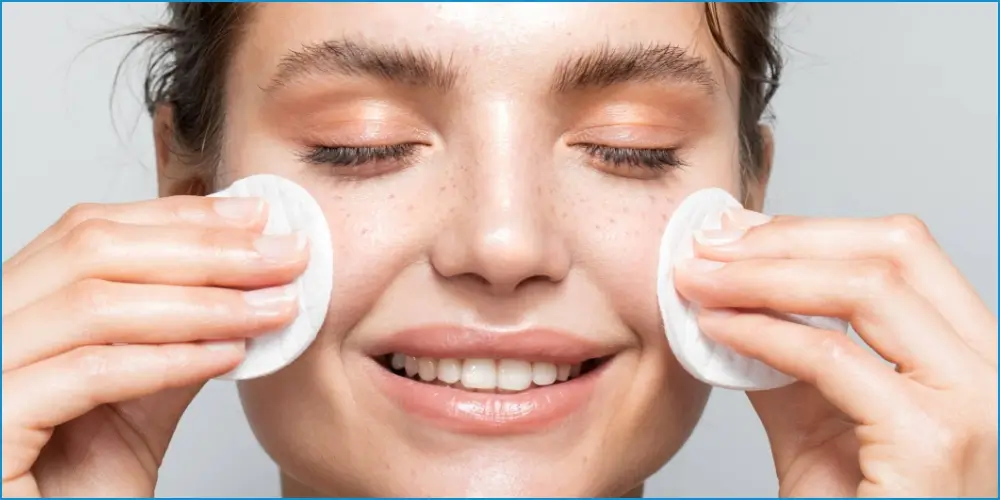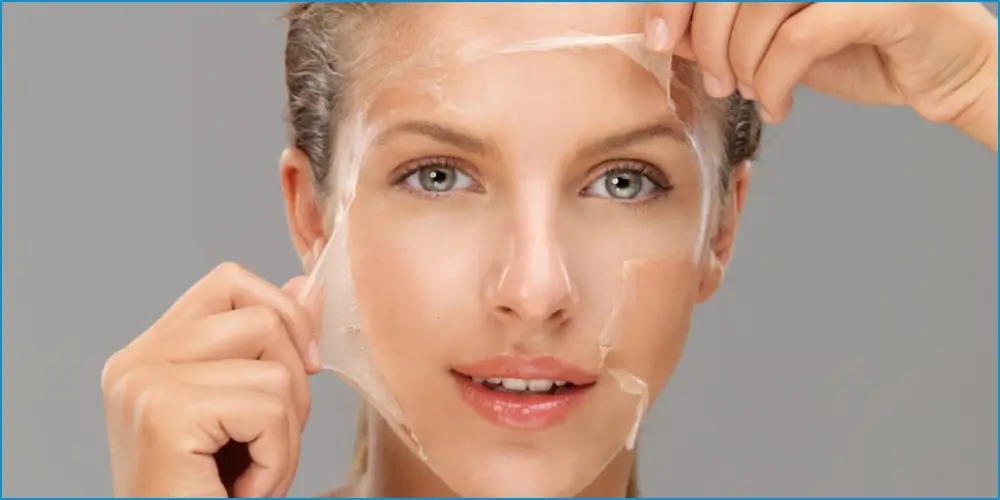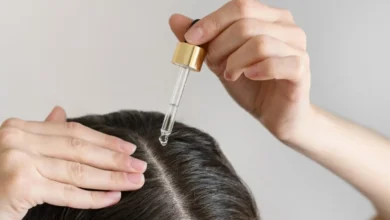7 Types of Facial Cleansers and How to Use Them

When it comes to skincare, the cleansing step is foundational, setting the stage for the effectiveness of all the products that follow. I’ve learned over the years that using the right facial cleanser is as critical as any other part of my daily routine. Cleansers are designed to remove makeup, dead skin cells, oil, dirt, and other types of pollutants from the skin, helping to keep our pores clear and prevent skin conditions such as acne.
Using a facial cleanser ensures that the skin is free from the grime of the day, which can prevent the active ingredients in our skincare from penetrating properly. Moreover, it’s not just about cleanliness; using a facial cleanser is the first step in a ritual that signals the body it’s time to wind down and prepare for rest or to wake up and get ready for a new day. But with so many options on the market, understanding the variety available and what makes each type unique is essential.
Cleansers come in various textures and formulations, each tailored to suit different skin types and concerns. From creams to oils and foams, each type of cleanser has its own set of benefits and best-use practices. So, let’s dive into the world of facial cleansers, understand their benefits, explore the different types available, and learn how to use them effectively.
Benefits of Using Facial Cleansers
Using a facial cleanser is not just about keeping the skin clean; it’s about maintaining the health and vitality of one of our body’s most exposed organs. The benefits of using a facial cleanser regularly are numerous. Firstly, it helps to prevent skin concerns such as acne and blackheads by keeping the pores clear of excess oil and dirt. Cleansed skin also allows for better absorption of products like moisturizers and serums, making them more effective.
Another benefit I’ve noticed is that regular cleansing helps to stimulate skin renewal by removing dead skin cells from the surface. This not only leaves the skin looking fresher and brighter but also helps to prevent the signs of aging. Furthermore, cleansing helps to maintain proper pore size and can even control excess oil production in oily skin types, which is a blessing for anyone struggling with shine and grease.
Lastly, the psychological effect of a cleansing routine cannot be overstated. It’s a moment of self-care that can have a calming effect, especially when done before bedtime. It signals to your body that the day is ending, which can help improve sleep quality. In the morning, it refreshes and invigorates, preparing you for the day ahead.
Different Types of Facial Cleansers
Cream Cleansers
Cream cleansers are a dream for those with dry or sensitive skin. Their thick, creamy texture is designed to cleanse the skin gently without stripping away its natural oils. Cream cleansers often contain moisturizing ingredients like botanical oils, which help to hydrate and soothe the skin as they cleanse. I find that they’re especially beneficial in the colder months when my skin tends to be drier and more prone to irritation.
One of the main advantages of cream cleansers is their ability to remove makeup effectively while still being gentle on the skin. They can be used both morning and night, and they leave the skin feeling soft and supple. For those with more mature skin, cream cleansers can also help to address concerns like fine lines and wrinkles, thanks to their nourishing formulations.
When using a cream cleanser, I like to apply it to my face using gentle, upward-circular motions. This not only helps to lift away impurities but also to stimulate blood flow, which can improve skin health and appearance. After massaging it into the skin, it can be removed with a warm, damp cloth or rinsed away with water.
Foam Cleansers
Foam cleansers are a popular choice for those with a combination of oily skin. They come out of the pump as a cream or gel and quickly turn into a rich, foamy lather when mixed with water. This lather is excellent for deeply cleansing pores and removing excess oil without being too harsh. What I love about foam cleansers is the clean, refreshing feeling they leave behind, making my skin feel purified and rejuvenated.
These cleansers are particularly effective at removing makeup and can be used in the morning to remove any oil that has built up overnight. They also work well as a second cleanse in the evening after removing makeup with a cream or oil cleanser. Despite their effectiveness, foam cleansers can be drying if used excessively, so it’s important to follow up with a good moisturizer.
To use a foam cleanser, I wet my face first, then pump a small amount of the product into my hands and gently massage it over my skin in circular motions. After ensuring that the entire face is covered, I rinse thoroughly with lukewarm water, making sure to remove all traces of the cleanser.
Gel Cleansers
Gel cleansers are fantastic for normal to oily skin types and are particularly good for those prone to acne. They are designed to cleanse the skin thoroughly without stripping it of its natural moisture. Gel cleansers are often cooling and refreshing, with a lightweight consistency that doesn’t leave any residue. They can contain ingredients such as salicylic acid or glycolic acid, which help to gently exfoliate the skin and keep pores clear.
I appreciate gel cleansers for their ability to balance my skin, offering deep cleansing properties while still being gentle enough for daily use. They are particularly effective at cutting through oil and can be used to remove lighter makeup. However, if you wear heavy or waterproof makeup, you may need to use a makeup remover first.
To use a gel cleanser, I apply a small amount to damp skin and massage it in with my fingertips. I focus on areas where dirt and oil tend to accumulate, like the T-zone. After thoroughly working it into the skin, I rinse it with cool water, which helps to close the pores and refresh the skin.
Oil Cleansers
Oil cleansers have gained immense popularity, and for good reason. They work on the principle that like dissolves like, meaning the oils in the cleanser dissolve the oils on your skin. This type of cleanser is excellent for all skin types, including oily skin. It’s especially effective at removing waterproof makeup, sunscreen, and other impurities that can be difficult to clean away with other types of cleansers.
7 Homemade Olive Oil Face Masks
One of the things I love about oil cleansers is their versatility; they can be used alone or as part of a double-cleansing routine. For those new to oil cleansing, the thought of applying oil to the skin may seem counterintuitive, especially if you’re prone to oiliness. However, I’ve found that oil cleansers can help regulate sebum production and maintain the skin’s natural balance.
To use an oil cleanser, I apply it to dry skin and gently massage it in with my fingers. This helps to break down makeup and impurities. After a thorough massage, I add a bit of water to emulsify the oil, turning it into a milky consistency that rinses away easily. I finish by rinsing my face with warm water, leaving my skin clean, soft, and hydrated.
Micellar Water

Micellar water is a gentle, no-rinse cleansing option that’s perfect for those with sensitive or dry skin, or for anyone looking for a quick and easy cleansing method. It contains tiny micelles, which are oil molecules suspended in soft water, that attract dirt, oil, and makeup like a magnet, lifting them away from the skin. Micellar water can be used as a standalone cleanser or as the first step in a double-cleansing routine.
I often reach for micellar water on lazy evenings or in situations where I don’t have access to a full skincare setup. It’s incredibly convenient, and I’ve found that it removes face makeup effectively without irritating. However, for heavy eye makeup or long-wear products, I sometimes need to follow up with a dedicated eye makeup remover.
Using micellar water is straightforward: I soak a cotton pad with the solution and gently wipe it across my face until the pad comes away clean. There’s no need to rinse, which makes micellar water an excellent choice for travel or freshening up on the go.
Exfoliating Cleansers

Exfoliating cleansers are designed to provide both cleansing and exfoliation in one step. They can be formulated with physical exfoliants like beads or grains that manually remove dead skin cells or chemical exfoliants like AHAs and BHAs that dissolve the bonds holding dead cells to the skin’s surface. I find exfoliating cleansers particularly useful for brightening the complexion and smoothing the skin’s texture.
It’s important to note that exfoliating cleansers should be used sparingly, as over-exfoliation can lead to irritation and sensitivity. I typically use an exfoliating cleanser no more than two to three times a week, depending on my skin’s needs and the type of exfoliant in the product.
To use an exfoliating cleanser, I apply a small amount to damp skin and gently massage it in, avoiding the delicate eye area. If the product contains physical exfoliants, I take care not to scrub too hard, as this can cause micro-tears in the skin. After massaging for a minute or so, I rinse thoroughly with lukewarm water and follow up with my usual skincare routine.
How to Choose the Right Facial Cleanser for Your Skin Type
Choosing the right facial cleanser for your skin type is crucial for maintaining healthy, balanced skin. The key is to understand your skin’s specific needs and concerns. For dry or sensitive skin, cream or oil-based cleansers that hydrate and soothe are typically the best choices. These cleansers help to nourish the skin while gently removing impurities without causing dryness or irritation.
If you have oily or acne-prone skin, gel or foam cleansers with ingredients that help to control oil production and prevent breakouts are ideal. Look for cleansers with salicylic acid, benzoyl peroxide, or tea tree oil, which can help to unclog pores and reduce inflammation.
Combination skin can be a bit more challenging, as it requires a balance between removing excess oil from the T-zone and hydrating the drier areas of the face. A gentle foaming or gel cleanser can be a good option, as it can cleanse effectively without over-drying the skin. Micellar water is also a versatile choice for combination skin, as it’s gentle enough for drier areas while still being effective at removing oil and impurities.
For those with normal skin, the choice of cleanser can be more flexible. You can opt for a gentle foam, gel, or cream cleanser, depending on your personal preference and whether you’re looking for something more hydrating or more refreshing.
Always consider any specific skin concerns you may have, such as sensitivity, aging, or hyperpigmentation, and look for cleansers that contain ingredients targeted to those issues. Remember that your skin’s needs can change with the seasons, your diet, and your lifestyle, so be prepared to adjust your cleanser choice as necessary.
How to Properly Use Facial Cleansers
Using facial cleansers correctly is just as important as choosing the right one. Start by washing your hands to prevent transferring bacteria to your face. Apply the cleanser to your face using gentle, circular motions. This technique helps to lift dirt and makeup from the skin and can improve circulation, giving you a healthy glow.
Be sure to avoid scrubbing your skin harshly, as this can cause irritation and damage. Instead, let the cleanser do the work. Pay special attention to areas where dirt and oil tend to accumulate, such as the forehead, nose, and chin, but remember to be gentle around the delicate eye area.
After you’ve thoroughly massaged the cleanser into your skin, rinse with lukewarm water. Water that’s too hot can strip the skin of its natural oils, while cold water may not effectively remove all traces of the cleanser. Gently pat your face dry with a clean towel—rubbing can irritate and contribute to wrinkles.
Common Mistakes to Avoid When Using Facial Cleansers
There are several common mistakes people make when using facial cleansers that can compromise the health and appearance of their skin. One of the most common errors is using a cleanser that’s not suited to your skin type. This can lead to a range of issues, from dryness and irritation to increased oiliness and breakouts.
Another mistake is over-cleansing. Washing your face too frequently or for too long can strip the skin of its natural oils, leading to dryness and irritation. Stick to cleansing twice a day—once in the morning and once in the evening—and avoid using harsh scrubs or brushes that can damage the skin’s barrier.
Not thoroughly removing the cleanser is another common pitfall. Residual cleansers can clog pores and lead to breakouts, so it’s important to rinse your face thoroughly after cleansing. Likewise, not rinsing with the correct temperature water can cause issues. As mentioned before, lukewarm water is the best choice for the most effective and gentle cleansing.
Finally, neglecting to follow up with a moisturizer after cleansing can leave your skin vulnerable. Cleansing can remove some of the skin’s protective oils, so it’s important to replenish moisture immediately after washing your face. This will help to lock in hydration and protect the skin barrier.
DIY Facial Cleanser Recipes

For those who enjoy a more hands-on approach to skincare or are looking for natural alternatives, DIY facial cleansers can be a fun and effective option. A simple recipe to start with is a honey and oatmeal cleanser, which is gentle and hydrating, making it suitable for most skin types. Simply mix raw honey with finely ground oatmeal and a little bit of water to create a paste. The honey provides natural antibacterial properties, while the oatmeal gently exfoliates and soothes the skin.
Another easy DIY cleanser is a yogurt and cucumber blend. Combine plain yogurt with pureed cucumber and a few drops of lemon juice for a refreshing and calming cleanser. The lactic acid in yogurt helps to gently exfoliate, while cucumber hydrates and lemon juice brightens.
For those with oily skin, a clay cleanser can be particularly beneficial. Mix bentonite or kaolin clay with apple cider vinegar and water to form a paste. The clay helps to absorb excess oil and draw out impurities, while the apple cider vinegar helps to balance the skin’s pH.
Remember, when creating DIY skincare products, it’s important to use fresh ingredients and to make small batches to ensure the product is effective and doesn’t spoil.
Conclusion
Facial cleansers are an integral part of any skincare routine, and choosing the right one can make all the difference in achieving healthy, radiant skin. From cream to foam, gel to oil, micellar water to exfoliating cleansers, there’s a wide variety to suit every skin type and concern. By understanding the different types of facial cleansers and how to use them properly, you can ensure that your skin is clean, balanced, and ready to absorb the benefits of your skincare products.
Remember to take into account your skin type, any specific concerns, and the ingredients in your cleanser. And don’t forget, consistency is key—using your chosen cleanser correctly and regularly will help you maintain the best possible skin health. YesTablets
I encourage you to try out the different types of cleansers mentioned here and find the one that works best for you. Your skin will thank you for it!


